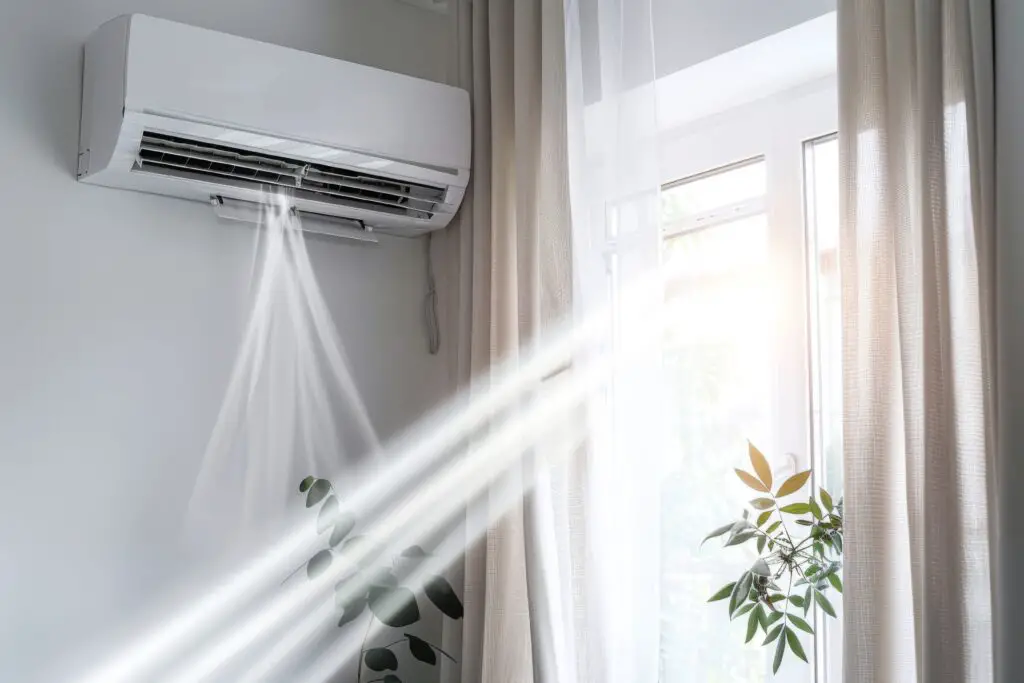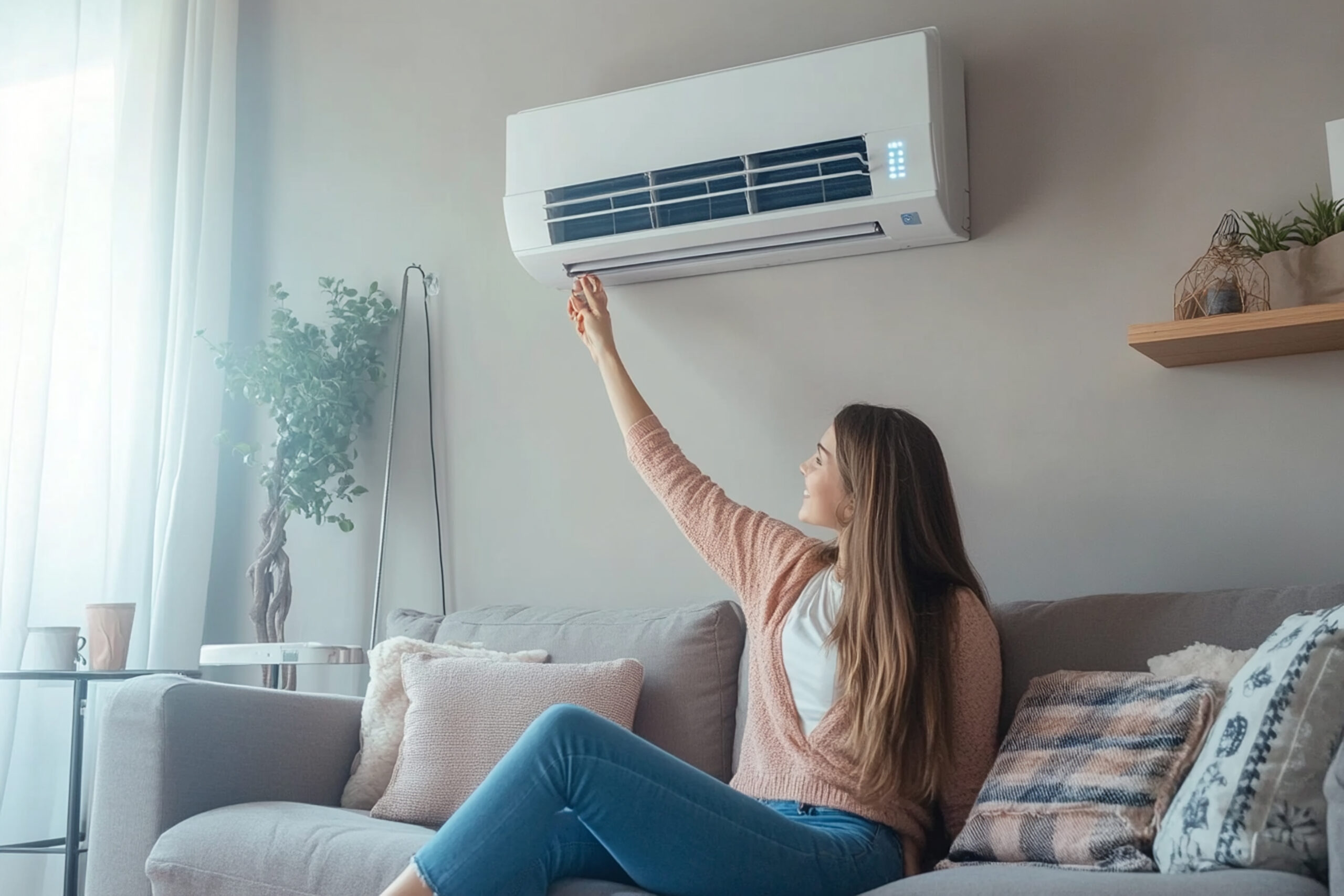Ever wondered if your air conditioner does more than just cool your living space? You’re not alone. It’s a common question many homeowners and renters alike have pondered. The answer isn’t as straightforward as you might think.
Air conditioners do more than just blow cold air, they also play a significant role in the overall quality of your indoor air. But does this mean they act as dehumidifiers too? We’re about to dive deep into this topic and clear up any misconceptions you might have.
So, buckle up and get ready to discover the hidden capabilities of your air conditioner. You might be surprised by what you’ll find out.
Understanding How Air Conditioners Operate

Jump into this journey exploring the workings of air conditioners. You’ll gain insights on how these machines do far more than just cooling your surroundings on scorching summer days. They can, indeed, take a vital role in managing indoor air quality, potentially acting as dehumidifiers. But, to comprehend that, let’s first grasp their basic mechanism.
The Basic Mechanism
An air conditioner, in its essence, performs two main operations: heat removal and moisture extraction. The central unit of the air conditioner, the evaporator coil, is pivotal for both processes. It consists of chilled refrigerant, which, upon encountering warm air, absorbs the heat, leading to a drop in the air’s temperature. This cold, low-pressure refrigerant then evaporates, taking heat with it and leaving behind cooler air.
So, how does this benefit you? Well, this temperature reduction ensures relief during hot days. But, it’s not just the cooling effect that matters. This evaporative process is equally crucial to manage indoor humidity levels.
Impact on Humidity Levels
As the warm, moisture-laden air from your room comes in contact with the cool evaporator coil, something interesting happens. The moisture content in the air condenses on the cold coil surfaces. Similar to how a glass of cold water on a warm day develops droplets on its exterior, the air conditioner coil collects condensation.
This condensed water is then drained out, effectively reducing the humidity level within your living space. So, your air conditioner acts as a dehumidifier, albeit indirectly. It’s keeping your indoors not just cool but also dry, contributing significantly to your indoor air quality.
Bear in mind, but, that the primary focus of an air conditioner remains cooling. The dehumidifying effect occurs as a secondary process, and certainly doesn’t replace the need for a standalone dehumidifier in high-humidity environments.
The Role of Dehumidification in Air Conditioning
As you dig deeper into the intersection of air conditioners and dehumidification, it’s essential to know how your air conditioning units perform this task. Not only will this knowledge let you utilise your units more effectively, but you’ll also grasp the immense benefits that come with decreased humidity levels in indoor environments.
How Air Conditioning Units Dehumidify
Air conditioning units serve a dual purpose: they cool and dehumidify. But how do they achieve this? As the fan in your air conditioner pulls in hot, humid air from your room, it cranks up the cooling process. It passes this air over the evaporator coil, a chilled pipe filled with refrigerant, which absorbs the heat and condenses the moisture present in the air. As the heat reduces, water vapour converts to liquid, and the air conditioner expels it—voila, that’s a dehumidification process in action! Remember, it’s not their main gig though; air conditioners are first and foremost temperature regulators.
Benefits of Reduced Humidity
Let’s explore the perks of a dehumidified environment now. For starters, lower humidity levels ward off issues like mould, mildew, and dust mites – perfect for folks who suffer from allergies. Also, getting rid of excess moisture helps prevent malodorous sweat and offers comfortable, cool indoor environments.
A bonus? Your air conditioner needs less energy to cool dry air, compared to damp air. It’s a win-win situation – enhanced comfort, improved health, and those energy-bill savings are undeniably satisfying.
Taking this all into account, the dehumidifying process employed by air conditioners is not just an incidental benefit. It’s an indispensable element aiding in healthier, more comfortable indoor environments. But, bear in mind that in high-humidity situations, you might still need the backup of a standalone dehumidifier.
Comparing Air Conditioners and Dehumidifiers

As we continue our exploration of air conditioners and dehumidifiers, it’s crucial to understand how they differ in function and usage.
Key Differences
In essence, air conditioners are cooling devices. They work by removing heat from the air and ‘conditioning’ it to an optimal temperature, plus to their side effect of moisture removal. Dehumidifiers, on the other hand, focus primarily on moisture extraction and aren’t involved in cooling the air.
Air conditioners, while effectively reducing humidity, might not always reach the desired levels, particularly in heavily humid areas. They also consume more energy, considering their dual role of cooling and dehumidifying. Statistically, dehumidifiers use around 15% less energy compared to air conditioners. So, if you’re concerned about your carbon footprint, a dehumidifier might offer a greener choice.
Dehumidifiers specifically target excess moisture. They excel in intense humidity situations, efficiently maintaining a comfortable and healthy indoor environment. Conventionally, they’re effective at preventing issues like mould, mildew, and dust mites linked to excess humidity, which an air conditioner couldn’t handle alone.
| Air Conditioners | Dehumidifiers | |
|---|---|---|
| Function | Cooling + Dehumidifying | Dehumidifying only |
| Energy Use | High | 15% less than Air Conditioners |
When to Use Each Device
Choosing between an air conditioner and a dehumidifier depends on your specific needs. If you’re primarily seeking to cool your space during hot months, an air conditioner is your go-to device. It’ll also provide the extra benefit of lowering humidity levels, improving overall comfort.
On the flip side, if you live in an area with a high humidity level but moderate temperatures, a dehumidifier could be your ideal solution. It’s the perfect choice for combating excess humidity without affecting the room’s temperature.
In high-humidity areas where cooling is also required, you might need to employ both devices. The air conditioner takes on the task of cooling, and the dehumidifier ensures optimal humidity levels, providing a comprehensive solution for a comfortable indoor climate.
Remember, creating a healthier home environment isn’t a luxury, it’s a necessity. It’s about making informed decisions and ensuring you have the right tools to maintain the air quality in your haven.
Optimising Your Home Environment

In the wake of understanding the functions of air conditioners and dehumidifiers, ensuing steps prioritise creating an optimal living space. This home environment demands careful consideration of the humidity level and the diligent upkeep of your cooling devices, particularly air conditioners.
Managing Humidity for Comfort and Health
Keeping humidity under check offers both comfort and a health shield. A hygrometer, a practical tool to measure humidity, can be your first purchase here. Generally, aim for a relative humidity level between 30% and 50%, optimising respiratory health. Exceeding 60%, it becomes an inviting platform for bacteria, mould, and dust mites.
But, the temperature also plays a pivotal role. During winter, setting your humidity at a modest level, between 30% and 40%, can curtail condensation on windows.
From venting rooms, especially those with excess moisture like the kitchen or bathroom, to choosing houseplants capable of absorbing humidity – small household habits play substantial roles. Ensuring good airflow and using exhaust fans are worth remembering here.
Tips for Maintaining Your Air Conditioner
Plus to managing humidity, practicing regular air conditioner maintenance increases the unit’s lifespan, all while maintaining its efficiency for cooling and dehumidification.
Start with the filter – cleaning or replacing it every 30 to 60 days limits the burden on the unit and reduces energy consumption. Also, ensuring the evaporator coils are dirt and debris-free enhances the cooling process.
Outdoors, keeping foliage at least two feet away from the condenser unit facilitates unimpeded airflow, whereas a shaded condenser can improve efficiency by up to 10% (US Department of Energy, 2017).
Finally, scheduling regular professional maintenance can stave off potential issues ahead of time, ensuring your air conditioner remains a reliable soldier in the battle against uncontrolled environmental conditions. Remember, an efficiently running air conditioner is not only a cooling companion but also a silent guardian against unwanted humidity.
Conclusion
So, you’ve discovered that your air conditioner does more than just cool your space. It’s also a dehumidifier that improves your indoor air quality by extracting excess moisture. But, remember its efficiency might not match up to a dedicated dehumidifier in high humidity situations. Your choice should hinge on your specific needs and the climate of your area. Sometimes, you might need both for optimum climate control. To keep your air conditioner running smoothly and effectively, don’t forget those essential maintenance tasks. Clean the filters, keep the evaporator coils free from debris, and ensure proper airflow around the unit. And don’t hesitate to call in the professionals for regular maintenance. By managing your home’s humidity levels, you’re not just ensuring comfort but also promoting a healthier living environment.
